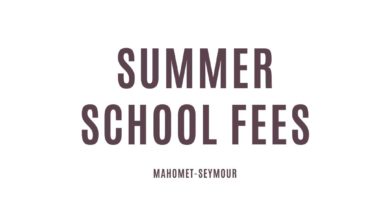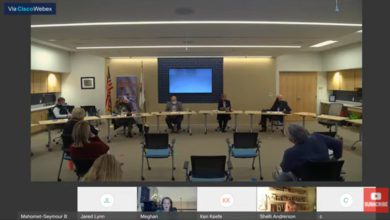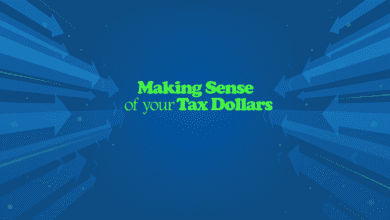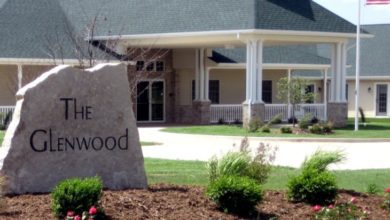M-S Board approves tax levy, Keefe proposed amendment
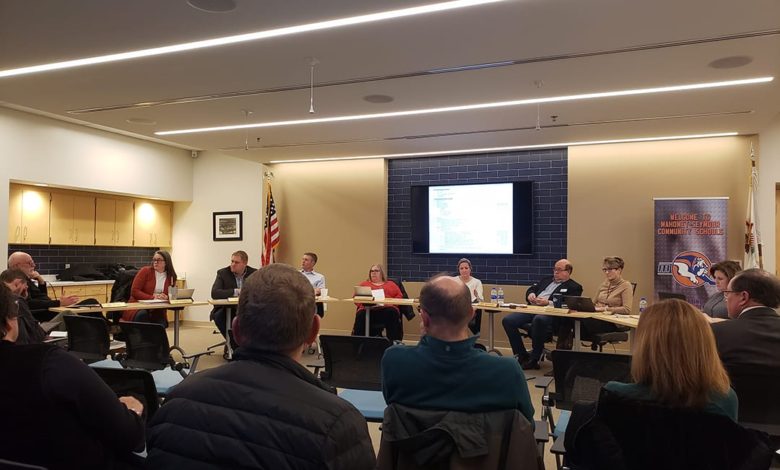
The Mahomet-Seymour School Board approved the 2019 tax levy, which includes an increase to be collected in 2020, with a vote of 6-1 on Monday.
Ken Keefe was the sole board member to vote no to the levy.
Keefe, along with board members Jeremy Henrichs and Lori Larson, missed the tax levy hearing prior to the regular board meeting.
When the tax levy vote and discussion came up, Keefe presented a document that looked at ways that the board could change the 0.1-percent increase to a 0.31-percent decrease.
The board first looked at the 2019 tax levy on Nov. 18 when Chief School Business Official Trent Nuxoll presented the adoption of the estimated tax levy. ILCS 200/18-60 requires taxing bodies to present an estimated tax levy 20 days prior to its final adoption.
The board approved the estimated levy.
The district began to put together the tax levy presentation on Oct. 18 when they received the EAV from the Champaign County Clerk’s office.
Since 1991, the properties that the Mahomet-Seymour School District serves have seen an average 5.84-percent EAV increase. The tax levy has held steady near 4.5-percent since 2013.
The district proposed an increase in the tax rate for 2019 to compensate for increases in social security ($670,000), IMRF ($670,000) and tort immunity ($930,000). During the tax levy hearing, M-S superintendent Lindsey Hall said that with the hiring of new teachers and increased retirement and legal costs, the Mahomet-Seymour School District needed to increase the funds in the upcoming year.
Since 2015 the Mahomet-Seymour School District’s tort and IMRF funds have ended each fiscal year with a positive balance.
The tax rate for other funds, like the educational fund, are already at the maximum rate for each fund, and cannot be increased by the school district without approval from voters.
The bond rate also cannot be adjusted by the school district as it is set by the amount of bonds the school is left to repay. Since the last ontake of debt, the district has made payments and that amount is decreasing. With each new bond issued, that rate would increase.
The district believes it will need $9,080,469 for educational purposes; $1,853,157 for operations and maintenance purposes; $741,263 for transportation purposes; $185,316 for working cash purposes; $185,316 for fire prevention, safety, energy conservation, handicapped accessibility and school security; the sum of $148,253 must be raised for special education purposes; and $185,316 for technology lease/purchase purposes.
The Mahomet-Seymour Finance Committee, which includes Keefe and Merle Giles, met on Dec. 11 to dive deeper into the levy. Prior to the meeting, Keefe asked a series of questions via email.
During the finance committee meeting, Giles said that the tax levy is all about predicting the need rather than the direct expenses.
Part of the increase to the tort fund is the expense associated with paying part of the School Resource Officer salary. The district is responsible for 75-percent of the SRO salary, which started out at $104,218.20 ($78,163.65 district responsibility) in 2018. The SRO received a 2.75-percent salary and benefit increase in 2019 and will receive a 3-percent increase in 2020.
Since 2018, the Mahomet-Seymour School District has also seen a steep increase in legal expenses. In 2015, the district spent $19,122 on legal services. In 2016 it spent $26,202 and in 2017 it spent $41,767.
Records show that by 2018, the district spent $153,606 on legal services and that amount more than doubled in 2019 to $360,502. To begin the fiscal year 2020, the district has already spent $92,954 on legal services.
Keefe also wanted to know why the tort expenditures bounced around so much. In 2012 and 2013, they were around $450,000, but from 2014 to 2015, they were $801,364 and $778,206, respectively. In 2016, they went down to $470,693 but in 2017 and 2018 they were $880,310 and $764,953, respectively.
Keefe said that up-and-down makes it hard to do projections for the tax levy.
At the finance committee meeting, Keefe asked if the board could still adjust some of the projections on Dec. 16.
Hall said, “As far as I know, it just takes a majority of the board to vote to change what Trent is proposing.”
Keefe asked Giles what he thought about the idea of lowering the liability rate so that the tax rate would come out the same as it did for 2018.
“An increase gives us a little bit of a padding that we can’t do in, for instance, the educational fund,” Giles said.
Between Wednesday and Monday, Keefe put together a proposal to lower the fund amounts, and ultimately the aggregate tax levy for 2019 to provide a small tax relief for voters.
He suggested changing the sum for IMRF to $650,000, social security to $650,000 and tort to $900,000. With the changes, Keefe believed that even with the decreased funds, the district would have enough to cover the expenses, based on past expenditures, even with the increases.
Giles said that looking at the percentage associated with increases in social security and IMRF would not be a fair assessment because the district did not add additional staff in previous years because the state funding was not there.
Larson said that the timing on Keefe’s proposal was too late in the game.
“I do not think it is appropriate to make an addendum, pass it out before the meeting starts tonight at 7,” she said. “This is becoming a habit and we need to set up great precedent of being diligent about doing things so that we can have informed decisions.”
Nuxoll was not at the regular board meeting or the finance committee meeting to answer questions about the levy due to personal reasons.
Larson said that she believes that Keefe went rogue.
“If we are doing things, we should represent a board, not a personal project,” she said. “I’m not comfortable with this coming out as a personal project.”
Board member Max McComb said he felt that he could not vote in favor of the proposal, either, because of the timing of the document.
“In the overall scheme of things, this is not a lot of money,” McComb said. “We’re overriding a professional whose done this for several years.”
Board member Meghan Hennesy suggested that maybe there should be a change of process in the upcoming year; instead of getting a first glance at the tax levy 20 days before the final vote, that the board could discuss the priorities of the taxpayers to offer input on the levied amount.
“That way we have the opportunity to have a discussion about raising/lowering taxes and what that actually means prior to him putting numbers together,” Hennesy said.
Hall said that staff would be open to getting input and looking at the amounts more closely earlier next year, but some of the decisions rely on getting information from other sources.
McComb said, “we can, but we certainly have a discussion regarding parameters, and what our expectations might be.”

